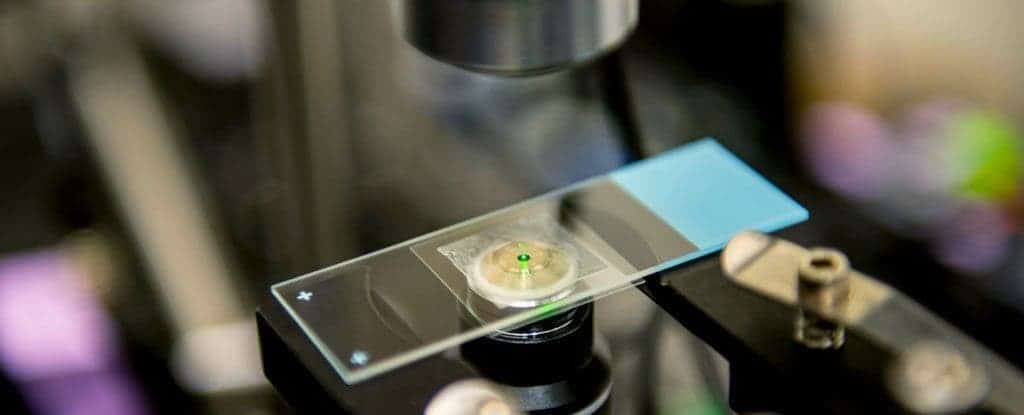We know how lasers work – they concentrate light onto a small surface, heat things up and do damage; after all, we’ve seen it in James Bond movies and Star Wars. But a team of researchers has shown that lasers can actually have the opposite effect.
“Typically, when you go to the movies and see Star Wars laser blasters, they heat things up. This is the first example of a laser beam that will refrigerate liquids like water under everyday conditions,” said Peter Pauzauskie, a researcher in materials science and engineering at the University of Washington. “It was really an open question as to whether this could be done because normally water warms when illuminated.”

Pauzauskie and his team used an infrared laser to cool water by 2.2 degrees Celsius (3.6 Fahrenheit) – not a huge temperature change, but a significant one, especially considering that this hasn’t been done before.
They did this by basically running a laser in reverse, concentrating light on a microscopic crystal suspended in water, making it glow with just a tad more energy than the light absorbed. This higher energy glow, depicted in the image above, actually carries heat away from the crystal and the water. This technique had been proved in a vacuum 20 years ago, but it’s the first time we can see it work in liquids. If the system can be refined and made more efficient, it could very well revolutionize refrigerating, but also slow down biological functions for scientific research.
“There’s a lot of interest in how cells divide and how molecules and enzymes function, and it’s never been possible before to refrigerate them to study their properties,” said Pauzauskie. “Using laser cooling, it may be possible to prepare slow-motion movies of life in action. And the advantage is that you don’t have to cool the entire cell, which could kill it or change its behaviour.”
Another potential application is in computers – these lasers could be used for cooling down processors and other computer components.
“Few people have thought about how they could use this technology to solve problems because using lasers to refrigerate liquids hasn’t been possible before,” Pauzauskie said. “We are interested in the ideas other scientists or businesses might have for how this might impact their basic research or bottom line.”


